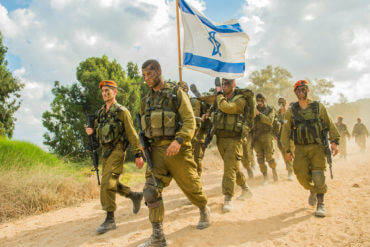Why Do We Need Selichos Anyway?
Dear Jew in the City-
What’s the history of Selichos? Why did it come about?
Best,
Mark
Dear Mark-
Thanks for your question. As far as the liturgy goes, Selichos are fairly contemporary. By that I mean that they are measured in mere centuries, rather than millennia.
Some of the prayers we recite, like Shema, appear in the Torah, which was given about 3,500 years ago. Many others come from Psalms and other books of the Bible, which places them from about 2,900 years ago. The text of the brachos that we recite were drafted by the Anshei Knesses HaGedolah (Men of the Great Assembly), a body that existed for centuries, starting at the end of the Biblical period some 2,400 years ago. Shemoneh Esrei, which was originally crafted by the Anshei Knesses HaGedolah, was edited into its final form, which we use today, by Rabban Gamliel in the first century, 2,000 years ago. By those standards, Selichos are upstart innovations!
For the most part, Selichos were composed from the late Geonic period through the time of the Rishonim. The Geonic period ran from the late 7th century through the early 11th century; the period of Rishonim spanned the 11th through 15th centuries. The authors of the Selichos came from France, Italy, Spain, Germany, and elsewhere. Some of the authors are among the most well-known scholars of the day, others are more obscure authorities, and some are not known to us at all. Just a few of the many authors of Selichos include Amram Gaon and Saadiah Gaon (9th century), Sherira Gaon (10th century), Shlomo ben Yitzchak (Rashi) and Shlomo ibn Gabirol (11th century), and Elazar ben Yehuda (The Rokeach – 13th century), among dozens of others.
The Ashkenazi practice is to start reciting Selichos on the Saturday night before Rosh Hashana; when Rosh Hashana falls on a Monday or a Tuesday, Selichos are said started on Saturday night a week earlier so that they should be recited at least four times. The reason we want to have at least four days of Selichos prior to Rosh Hashana is explained in the Mishnah Brurah (581:5). Formerly, many people, as part of their teshuvah process, would fast for ten days up to and including Yom Kippur. But it’s impossible to fast for the entirety of the Ten Days of Repentance because there are four days when it’s forbidden to fast: the two days of Rosh Hashana (which are yom tov), Shabbos Shuvah (which is Shabbos) and erev Yom Kippur (when we are required to eat). Accordingly, they would fast for four days leading up to Rosh Hashana and, since they were fasting, they would recite Selichos (since Selichos are recited on fast days). While the custom to fast for ten days is certainly no longer common, it has informed our practice as to when we start reciting Selichos. (The Sephardi practice is to recite Selichos for the entire month of Elul, so none of that makes any difference to them.)
The format for Selichos is based on the order of the daily prayer service. Selichos begins with Ashrei and ends with Tachanun, with the piyyutim (liturgical poems) of Selichos serving as the functional equivalent of the Shmoneh Esrei. (For this reason, we recite “Kaddish Tiskabeil” at the end of Selichos, a version of Kaddish typically only recited following the portion of a prayer service that includes an Amidah.)
Selichos are generally recited overnight, preferably between midnight and dawn. In practice, some may recite them at night following Maariv, though most people in our day and age probably recite them in the morning before Shacharis. The Selichos service includes a series of Biblical verses in which we ask for forgiveness and contrast God’s greatness with our own insignificance, vidui (the confession), and some ancient prayers that date back to the time of the Second Temple.
The reason we recite Selichos is clear: Elul and the ten days from Rosh Hashana through Yom Kippur are a time dedicated to teshuvah (repentance) and the Selichos are designed to motivate us towards that goal. They are profound, beautiful prayers, extremely poetic in nature. For most of us, our language skills are not sufficient to truly appreciate them. Accordingly, reviewing them in advance in translation, preferably with explanatory footnotes, will go a long way towards helping the Selichos accomplish their intended purpose.
Sincerely,
Rabbi Jack Abramowitz
JITC Educational Correspondent
If you found this content meaningful and want to help further our mission through our Keter, Makom, and Tikun branches, please consider becoming a Change Maker today.








1 comment
Sort by
Thank you Rabbi Abramowitz for preparing us for slichos. It was a special article. The one piece I always remember from school, is how H-Shem taught Moshe Rabbeinu the 13 attributes and Moshe got to see the kesher of H-Shem’s tfillin. They’re the highlight of Slichos and Yom Kippur and in my ears I can still hear my son’s (now grown) repeating the ויעבור ה’ על פניו ויקרא. Wishing all at Jew in the City a wonderful great New Year.